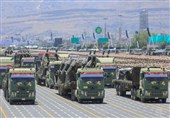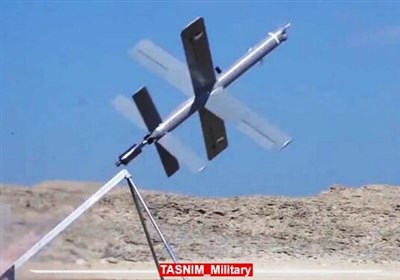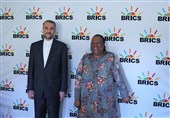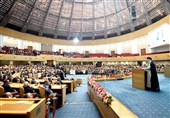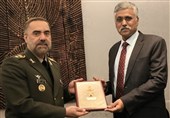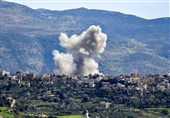Yemen's Military Display Highlights Advanced Capabilities Amid Ongoing Conflict
TEHRAN (Tasnim) - The Yemeni military conducted an unexpected and commendable drill in Sanaa's "Al Sabeen" square last Thursday amid the ongoing conflict with Saudi Arabia, the United Arab Emirates, and other nations.
The war bears a striking resemblance to Saddam Hussein’s war against Iranian people that was supported by the West and Arab coalition, Saadallah Zarei, a senior regional expert, stated in a comment to Tasnim News Agency, which is as follows:
"The 30th of Shahrivar (September 21st) is known as the anniversary of the revolution against Abdrabbuh Mansur Hadi in Yemen. On this basis, Yemen showcased its increasing capabilities on the anniversary of this day. In this exercise, Yemen's land, sea, air, special missile, and drone forces displayed their advanced industry and achievements.
Storm boats 1, 2, and 3, as well as ground-to-sea missiles powered by solid fuel, including untraceable cruise missiles; Saqib, Karar, and Mujahid sea mines; three types of radars, B16, Shafaq, and Ofogh (Horizon), capable of identifying targets at a range of 90 kilometers and at an altitude of 35,000 feet; ground-to-air missiles Bargh 1, Bargh 2, Fatir 1, Khatif 2 drones, Qasef 2 drones, and Hatham missiles, which are similar to Iranian Khaybar-shekan, were unveiled as part of this big maneuver. Meanwhile, Yemen's air force, which had been completely decimated in the early years of the war, proved its resurgence with F5 fighter jets and MI-17 helicopters.
Yemen's display of advanced weaponry included ground-to-sea missiles, radar systems, ground-to-air missiles, surveillance drones, fighter jets, and helicopters, highlighting the nation's military advancements.
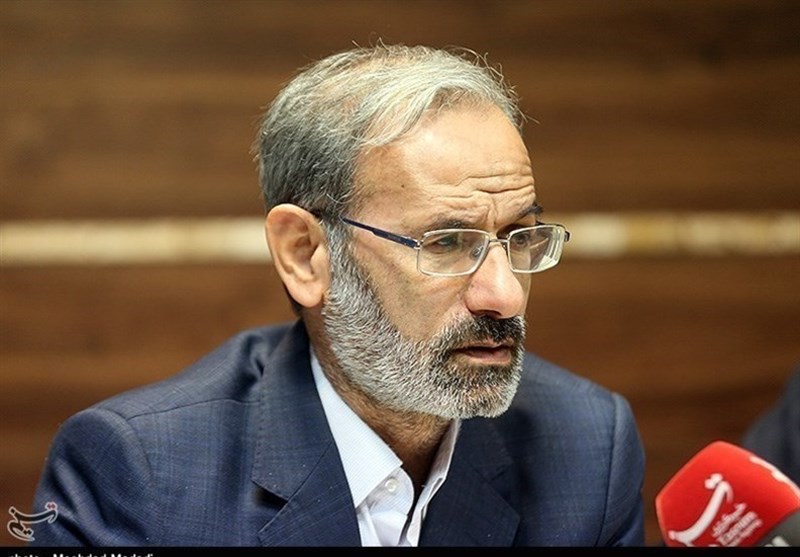
This level of military progress is a testament to the Yemeni people's resilience in the face of adversity. Despite Western claims of Iranian involvement, it is evident that Yemen has developed these capabilities independently, given the strict blockade imposed on the country.
Who could believe that this extensive array of heavy weaponry displayed in Sana'a could be smuggled into a country completely blocked by the invading coalition on land, in the air, and at sea? If this were accurate, it would reveal significant technological and intelligence shortcomings on the part of the Western-Arab coalition. However, the truth is that, despite inspiration and guidance, Iran hasn't been able to offer significant military aid to Yemen, making it clear that this achievement is a testament to the Yemeni people's resilience.
Negotiations between Yemen and Saudi officials, aimed at securing humanitarian demands and ending the war, have been ongoing over several months. Yemen seeks an end to the conflict, the withdrawal of foreign forces, payment of long-delayed wages, and control over its ports and resources. These demands cannot be subject to conditional acceptance.
As Yemen's Defense Minister, Mohammed al-Atifi, stated, "Foreign forces must leave our land, or they will face our wrath." Yemen asserts its rights over its territory and maritime areas. Similarly, Yemeni Political Council leader Mehdi al-Mashat's declaration that "The islands, seas, and Bab-el-Mandeb strait belong to Yemen, whether they like it or not," asserts an indisputable natural right.
Yemen's defensive innovations in a long-term ceasefire show their commitment to their interests. Yemen has faced a multitude of challenges, including wars, information warfare, economic hardships, and blockades. Despite these challenges, the Yemeni people have shown remarkable resilience and determination.
The Yemeni people seek a genuine peace that ensures security and stability. However, they will not accept aggression or threats to their sovereignty. Recent negotiations in Riyadh may lead to a return to pre-ceasefire conditions, as the existing ceasefire lacks official recognition.
International developments show that we must shift from Cold War or unipolar era thinking. Great powers are increasingly influenced by environmental and regional factors. Previous coercive coalitions have transformed into collaborative agreements.
Yemen's defensive innovations and military parade signal their readiness to protect their interests. Regional developments, including those in Yemen, underscore the evolving nature of global politics and alliances. The Yemeni people, through armed jihad and intelligent diplomacy, can shape their future.

